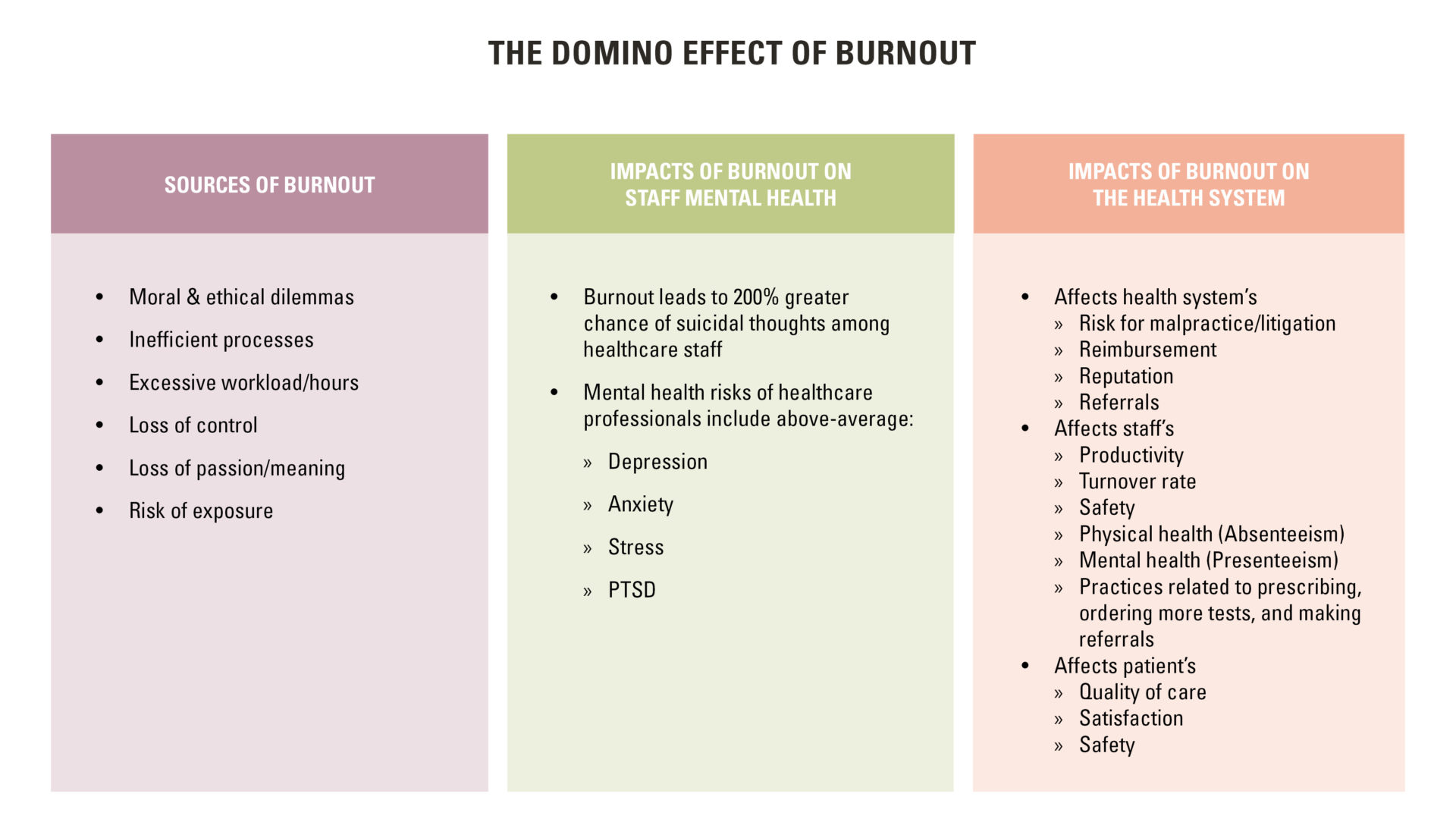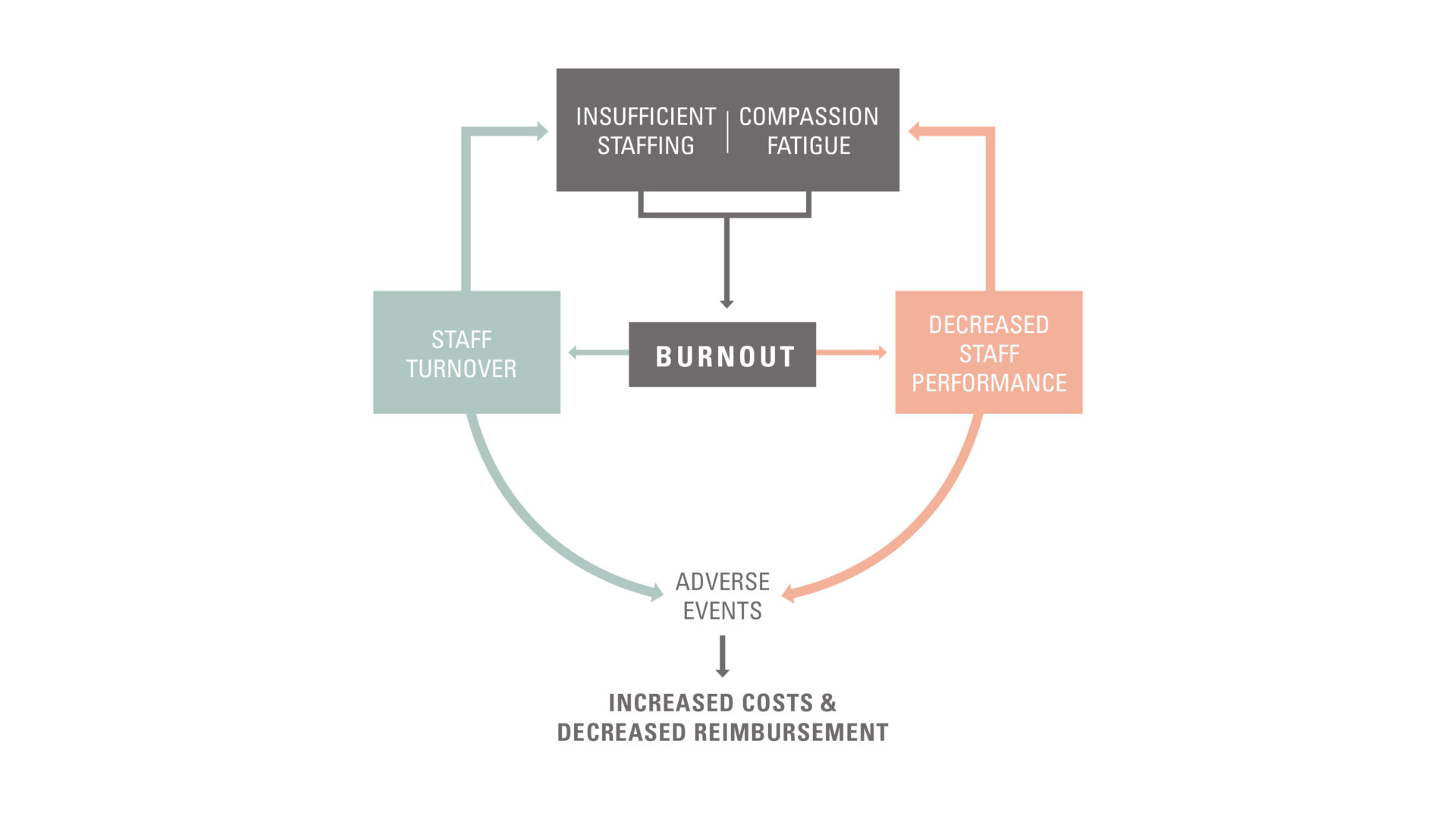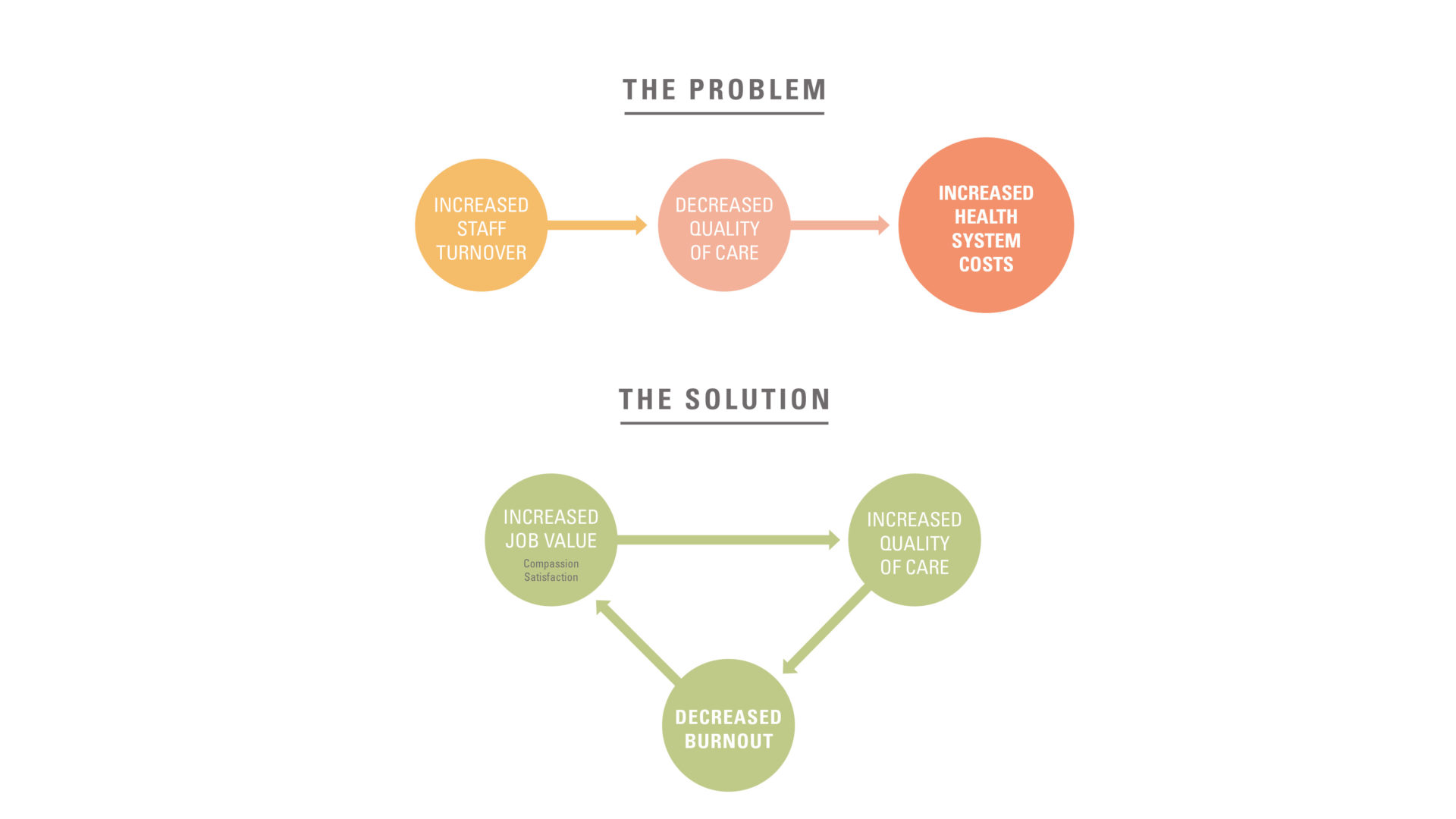Addressing Staff Burnout and Turnover
Through Design
Twice a year, Little awards “LaceUp” mini-grants to employees with ideas for projects that support Little’s mission of producing results beyond architecture through utilizing breakthrough thinking. LaceUp is a catalyst toward a culture of exploration, collaboration, and testing. It connects the initiative of individuals with mini-grants that support opportunities for breakthrough thinking. So Lace Up your hiking boots, because it’s time to explore new ideas to build a better future through the built environment!
One of the LaceUps awarded this past fall sought to address two major issues impacting our health systems as a result of the COVID-19 pandemic, by investigating how the healthcare environments we design can influence staff burnout and turnover. The LaceUp team reviewed existing research and synthesized this information to then brainstorm design solutions that can influence positive change through restorative and supportive healthcare workplaces. The literature review helped connect the dots across multiple cause-and-effect relationships, and brought to light the vicious cycles that occur involving staff burnout, turnover, adverse events, and the bottom line. The research also supported the opportunity to address these issues through the impact of spaces we design in each of our projects.
As we start to feel like we’re turning a corner in the pandemic, there is another crisis looming in the shadows of COVID. Healthcare staff burnout and turnover have reached dire levels and brought us to a tipping point where the quality of care for the nation’s patients will see a substantial decline unless a significant and meaningful change occurs.
Pre-pandemic, over half of physicians in the US were experiencing significant levels of burnout, and approximately 25% of ICU nurses experienced PTSD. Healthcare staff burnout and mental health was a major issue even before COVID, which has been exacerbated by the pandemic, and will remain an issue long after the pandemic is in our rearview mirror.
This impacts all of us, because healthcare staff burnout and turnover both have significant negative influences on quality of care.
How do the issues of healthcare staff burnout and turnover relate to design?
Extensive research has shown there is a strong connection between the built environment and the occupants within the space, such as shorter hospital stays and less pain medication for patients with a view of nature as compared to those with a view of a brick wall. As designers of the healthcare workplace, we have a responsibility to ensure the environments we create help relieve burnout and turnover.
As it relates to staff, research shows the impact of workplace design on staff performance and their physiological and psychological well-being in a typical office setting. Additional research shows a connection between the mental state of healthcare staff and patient outcomes. Therefore, it can be concluded that the design of healthcare staff spaces influences patient outcomes.

Reverse the Vicious Cycles
Healthcare staff spaces should be designed with careful consideration for relieving the staff’s compassion fatigue, since an increase in compassion satisfaction leads to a decrease in insufficient staffing, and thus improves the quality of care provided to the community.


Considerations for the Project Team
- Leveraging the funds already allocated for design projects as a method to address these issues allows the health system to enable positive change without significant additional costs.
- The design solutions developed to address these issues should be a priority throughout the project, and the project team should avoid eliminating them during the value engineering process.
- While there can sometimes be a higher initial cost to some design solutions, it is expected that health systems can experience a quick return on investment and net profit as a result of lower levels of staff burnout and turnover, and their associated positive effects on patient outcomes and HCAHPS scores.
- The more design strategies that can be implemented, the greater benefits and ROI they’ll yield.
By implementing the design strategies outlined here, the built environment can promote relief from the issues afflicting healthcare staff, and thus improve the quality of care available to the communities they serve, while also positively impacting the health system’s bottom line.
This LaceUp was completed by Members of Little’s Healthcare and Site Design teams.

